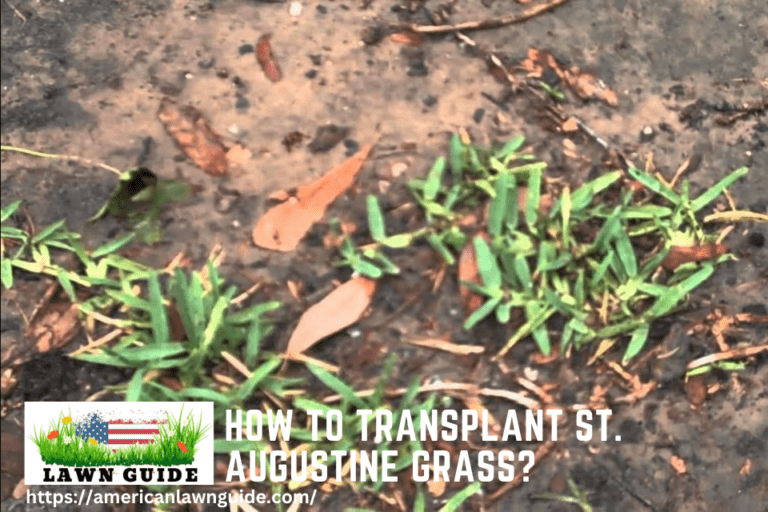There are a few reasons why your lawn may be lumpy. It could be due to the type of grass you have, the amount of water and fertilizer you’re using, or even insects. If you suspect insects, check for small mounds of dirt on the surface of your lawn.
These could be ant hills or grub holes. To fix a lumpy lawn, start by mowing it regularly and removing any debris that might be causing bumps. Then, aerate the soil to allow air and water to reach the roots more easily.
Finally, fertilize and water your lawn regularly to keep the grass healthy and strong.
If you’ve ever had a lawn that’s lumpy, you know it’s not a pleasant experience. But why does this happen? There are actually a few reasons why your lawn might be lumpy.
One reason is that the soil might be too dry. When the soil is too dry, it can’t hold together as well and will start to form lumps. Another reason is that the grass might be too long.
If the grass is too long, it can start to mat down and form clumps. Finally, if there’s too much thatch in your lawn, it can also cause lumps. Thatch is a layer of dead organic matter that builds up on top of the soil.
It can prevent water and nutrients from getting to the roots of the grass, which can make the grass weak and more susceptible to forming lumps. If you have a lumpy lawn, there are a few things you can do to fix it. First, check the moisture level of your soil and make sure it’s not too dry.
You can also try mowing your lawn shorter so that the grass isn’t as long.
Leveling Bumpy Lawn
What Causes a Lawn to Become Bumpy?
One common reason your lawn may become bumpy is due to grubs. Grubs are small, white larvae that feast on the roots of your grass, causing it to die and turn brown. This can create bald spots or patches of dead grass in your lawn.
As the grubs grow, they also cause the soil to loosen, creating bumps on the surface of your lawn. To confirm if grubs are the culprit of your bumpy lawn, look for signs of damage such as brown patches or dying grass. You can also dig up a small section of turf to look for grubs in the root zone.
If you find more than five grubs per square foot, then you likely have a grub infestation and should take action to treat your lawn. There are several ways to get rid of grubs, including using chemical insecticides or nematodes (tiny parasitic worms). You can also encourage predators like birds and skunks to eat the grubs by providing food and water sources in your yard.
Finally, you can improve the health of your lawn by aerating it and adding compost or other organic matter to help it resist future infestations.
How Do You Level a Bumpy Lawn?
If your lawn is bumpy, it’s probably due to uneven settling. When soil settles, it can form small hills and valleys. Uneven settling is often the result of improper drainage or compaction from things like foot traffic or heavy equipment.
There are a few different ways that you can level a bumpy lawn. One option is to use a garden rake to manually even out the bumps. This can be a lot of work, but it’s effective if you have a small area to cover.
Another option is to use a power lawn roller. This tool will help to quickly flatten out any bumps in your lawn. Be sure to fill the roller with water before using it on your lawn so that it’s not too heavy and damaging to the grass.
A third option is to hire a professional landscaping company to level your lawn for you. This is usually the most expensive option, but it will save you time and effort in the long run.

How to Fix Lumpy Lawn?
It’s that time of year again. The kids are back in school, the leaves are falling and your once beautiful lawn is now a lumpy, bumpy mess. What happened?
Chances are you have some enthusiastic young helpers who decided to play a game of football or soccer on your lawn without your permission – and now you’re left with the aftermath. Don’t despair! There is hope for your lumpy lawn.
With a little bit of elbow grease (and maybe a few extra hours on the weekend), you can get your yard back into tip-top shape. Here’s how:
First things first, take an inventory of the damage.
Walk around your entire property and make note of any areas that look particularly bad. It’s important to be as thorough as possible so that you can create a plan of attack.
Once you know where all the problem areas are, it’s time to start fixing them.
For small bumps, simply use your hands to push down the grass until it’s level with the rest of the lawn. For bigger problems, you may need to dig out some of the dirt and then replant grass seed in order to level off the area.
After all the big bumps have been taken care of, it’s time to focus on those pesky little lumps that seem to pop up everywhere.
The best way to deal with these is by using a garden roller . Fill up the roller with water (or sand if you prefer) and then roll it over each lumpy spot until it flattens out.
Finally, give your entire lawn a good raking .
Why is My Yard Lumpy And Soft?
There are a few reasons your yard may be lumpy and soft. First, it could be that the ground has not been compacted properly. This can happen if the soil is too wet or too dry when you are tilling or planting.
Second, your yard may have pockets of air beneath the surface. These pockets can form when water seeps into the ground and then evaporates, leaving behind voids in the soil. Third, your yard may have roots growing just below the surface.
When these roots die, they decompose and leave behind bumps in the ground. Lastly, animals digging in your yard can also create bumps and divots. If you’re not sure why your yard is lumpy and soft, it’s best to consult with a professional landscaper or lawn care specialist.
They will be able to diagnose the problem and recommend a solution. In most cases, simply compacting the soil or leveling out any root growth will take care of the issue. However, if there are large animal burrows present, you may need to fill them in with fresh topsoil before proceeding.
Small Bumps in Lawn
If you’ve noticed small bumps in your lawn, you may be wondering what they are and how to get rid of them. These bumps are most likely moles, which can be both a nuisance and damaging to your lawn. Moles are small, burrowing mammals that live underground and feed on insects and earthworms.
While they’re not harmful to humans, they can cause quite a bit of damage to your lawn by digging tunnels and eating your plants. The best way to get rid of moles is to trap them. You can do this by buying a mole trap at your local hardware store or online.
Be sure to set the trap according to the manufacturer’s instructions, as different traps work differently. Once the mole is caught, release it in an area far away from your property so it doesn’t come back. If you have a lot of moles or if trapping isn’t working, you may need to use a pesticide.
There are several types of pesticides available for moles, so be sure to read the label carefully before purchasing one. Apply the pesticide according to the label directions; typically, this means applying it around the perimeter of your property or in areas where you’ve seen moles tunneling. With a little patience and effort, you can get rid of those pesky moles for good!
Conclusion
If you’ve ever wondered why your lawn is lumpy, you’re not alone. Many homeowners have experienced this problem at some point. There are several reasons why your lawn may be lumpy, but the most common cause is simply due to poor drainage.
When water doesn’t drain properly from your lawn, it can cause the soil to become compacted and form clumps. This can make it difficult for grass to grow in those areas, resulting in a patchy or uneven lawn. There are a few things you can do to improve the drainage in your lawn and prevent lumps from forming.
First, make sure that there is no debris blocking the flow of water off your property. If there are leaves or other organic matter blocking drains or gutters, this can cause water to back up and pool on your lawn. Second, consider installing a French drain or other type of drainage system to help move water away from your home and into an area where it can safely dissipate.
Finally, be sure to aerate your lawn regularly to ensure that the soil stays loose and doesn’t become compacted over time.




